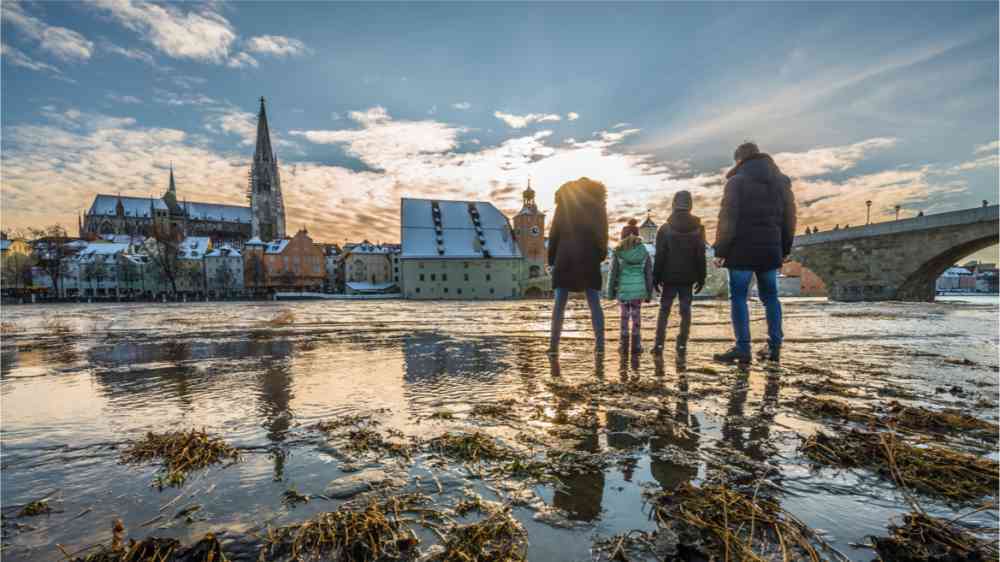Adaptation solutions for improved climate change resilience

Europe must undertake transformative adaptation to become more resilient to the climate crisis. In the ethos of leaving no region behind, the EU-funded project RESIST focuses on co-developing climate solutions, innovations and technologies in four experienced regions in collaboration with eight less climate-resilient areas of Europe.
RESIST is part of a broader strategy at the European level: the EU Mission Adaptation to Climate Change. The mission, boosted by the European Commission, focuses on supporting at least 150 European regions, cities, and local authorities by 2030 in their endeavours “to build resilience against the impacts of climate change”. The EU Mission Climate and, therefore, also RESIST, contributes to achieving the targets set in the EU Green Deal and EU Adaptation Strategy.
Climate change resilience and adaptation
Adapting to climate change means acting to prepare for and adjust to the ongoing climate change effects and predicted future impacts. European regions and cities have different climate vulnerabilities and levels of preparedness. RESIST has engaged 12 European regions with other bio-geographical areas and socioeconomic profiles so far. Southwest Finland, Central Denmark, Catalonia and Central Portugal are the frontrunner regions testing adaptation solutions to key climate-related challenges in their area.
Each of these four regions is twinned with two other regions, one low-income and one high-income, according to the European Regional Development Fund (ERDF) criteria with similar bio-geographical characteristics. Southwest Finland is working with Normandy (France) and Eastern Macedonia and Thrace (Greece); Central Denmark with Blekinge (Sweden) and Zemgale (Latvia); Catalonia with Puglia (Italy) and Baixo Alentejo (Portugal), and Central Portugal with Vesterålen (Norway) and Extremadura (Spain).
These European regions are testing adaptation solutions to five key climate challenges: floods, droughts, heatwaves, wildfires, and soil erosion. Nature-based solutions (NBS) are one of the top adaptation pathways tested within the project, in line with one of the priorities of the EU Adaptation Strategy, for example, in the context of stormwater and sustainable water management in Southwest Finland.
Digital twin technology is also pivotal in project innovations and solutions testing. In the context of climate change adaptation, digital twins can model how different climate change scenarios will impact societal and environmental systems in the real world, supporting the development of more effective, targeted and financially sound climate solutions and strategies.
RESIST uses this technology to develop already rigorously tested solutions, avoiding unnecessary costs and undesired outcomes when applying them. The digital twin will enable better stakeholder engagement following the quintuple helix model and facilitate stakeholder decision-making.
Technical framework for climate-resilient demonstration
RESIST is built on the real challenges and needs of the 12 climate-vulnerable regions in Europe involved in the project. To establish pathways to resilience, RESIST partners have been focusing on defining the technical framework for climate-resilient demonstration during the project’s first months.
One of the main activities developed to set that framework was the needs assessment of the project regions. The analysis establishes and defines the status quo, including gaps, challenges and progress in place. This paved the way for clearer climate risk assessment frameworks for building climate resilience pathways.
The analysis led by the RESIST Project partner Adelphi collected information based on existing risk assessments, adaptation policies and measures, and information about stakeholder involvement and different capacities. The team did extensive desk research checking country profiles on the Climate-ADAPT platform, the 7th National Communications under the UNFCC, Information provided as part of the reporting under EU Governance Regulation 2018/1999; country fiches from the European Commission Adaptation Preparedness Scoreboard, and ESPON-CLIMATE datasets.
They also conducted questionnaires and interviews with the regional partners to understand the information better.
The needs assessment identifies gaps, challenges and the need for support. As part of the analysis, the project team checked whether past climate risk assessments (CRA) in the target regions had included the international and European standards, which identified several key steps for CRA. This was beneficial for putting the findings of past assessments into context and determining possible needs and approaches concerning future risk assessments.
Climate change resilience: Risk assessment in Denmark
The case of the Central Denmark region can be highlighted as paradigmatic. In Denmark, the focus of climate risk assessment and management falls on municipalities, which are required to develop their own plans. Municipal risk assessments mainly – and sometimes even exclusively – focus on flood risk management rather than on a broader range of climate risks. Compared to ESPON data, the increasing risks from all types of floods in the Central Denmark region are clear, as highlighted in the municipal risk assessments.
However, ESPON and the local analysis diverge strongly regarding drought stress (on the primary sector) and heat stress (on the population). These climate risks are expected to become significant – and perhaps the most pressing – regional risks in the future. However, the existing assessment approach in Denmark and its municipalities falls short of adequately integrating these threats.
Central Denmark still lacks awareness and integrated planning for the water challenges linked to climate change impacts, something that RESIST will focus on changing. The project activities in the region will focus on demonstrating ways of adapting buildings to flooding. RESIST aims to raise public awareness by showing alternative building methods resistant to water damage.
The innovations applied will promote a participatory approach to resilience. They will help incorporate the views of vulnerable population groups affected mainly by climate change in the proposed pilot areas and develop measures to meet their needs.
Climate resilient development involves everyone,” states the IPCC Sixth Assessment Report. Against this backdrop, RESIST aims for a cross-sectoral collaboration to identify, develop, and validate region-specific solutions that will effectively contribute to the future resilience of European regions and cities.
Beyond creating a solid technical framework, RESIST partners are working to ensure the project’s impact through social innovation. The project follows the quintuple helix model, which involves civil society organisations (CSOs), the private sector, policymakers and the scientific community through a cross-sectoral and bottom-up approach.